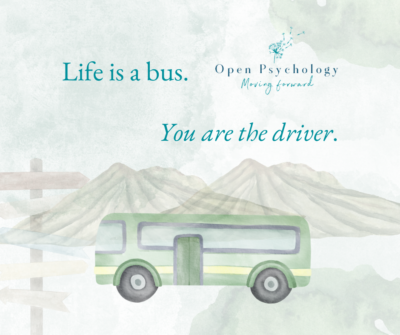One of the most well-known metaphors used in therapy is “The Passengers on the Bus”, by Steven Hayes. In this exercise, you have to imagine that you are a bus driver, and the bus represents your life. You must figure out what direction you want to go in and keep that in mind, like your compass.

But you’re not alone. There are passengers that will get on the bus along the way (and some may have been sitting there for a long part of the journey), which represent your thoughts and feelings, and they will try to tell you where to go.
It is exhausting to try to listen to every passenger, each one tugging you in a different direction. “Don’t even attempt that, you’ll fail!” might say one; “But you need to prove your self-worth. You’re nobody if don’t keep accomplishing things!”, might say another. Soon you will realise that you cannot please them all. What would happen if you allowed the passengers to take over the steering wheel by telling you what route to take?
Instead, you can hear each passenger complaining, as if they were a radio playing in the background, and focus on the road and direction you’re taking. Yes, there are annoying sounds in the background, like a pesky fly in the windscreen, but that won’t stop you from soaking in the sunset you can see ahead.
This metaphor helps us understand that we can choose how to respond to our thoughts and feelings rather than being driven by them, promoting what we call ‘psychological flexibility’.
And now ask yourself – what passengers are riding your bus at the moment? Where is your attention whilst you’re driving your bus? Are you focusing on what the passengers are saying, or allowing them to ramble on in the background as you look ahead?




